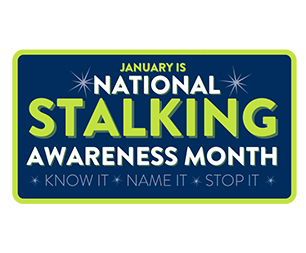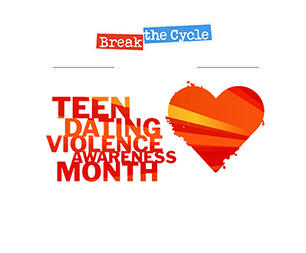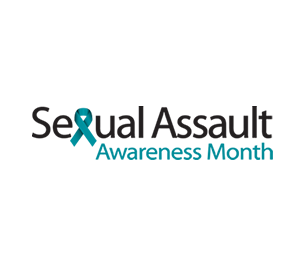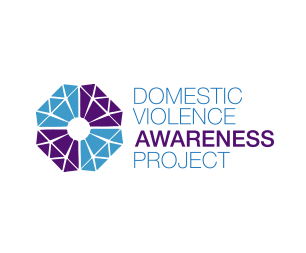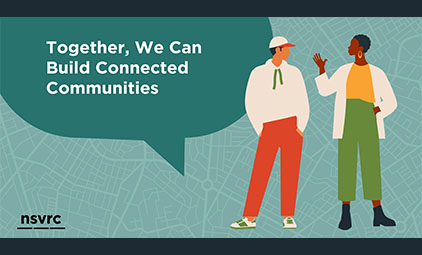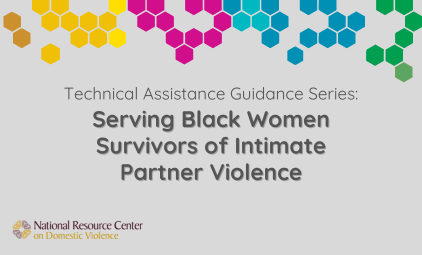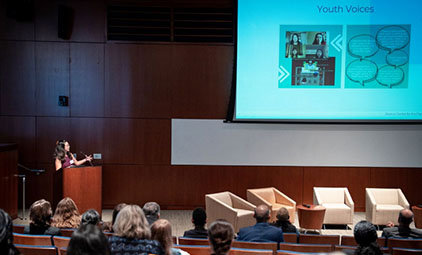By Ashley Carter, Founder & CEO, ASX Consulting
Dr. Christina Sharpe describes Black existence as living in a paradox called “the wake.” Living in the wake means living the history and present of terror, from slavery to the present, as the ground of our everyday Black existence. Black advocates are being pushed out of the movement when it needs us most. And, with the pandemic shattering workplace norms, human resource leaders are still picking up the pieces.
Why is the movement pushing away Black advocates?
“(…) inside movement workplaces, the rhetoric about race often does not match reality.” – Madison Pauly for Mother Jones
“Women of color came to this work because the movement’s ‘justice’ rhetoric promised us that our leadership would be recognized and supported. We believed that promise,” says Beth E. Richie. There are nearly 3,000 domestic violence programs and shelters between the US and Canada, with approximately 2,000 in the US alone. And, while Black women are disproportionately affected by domestic violence related felony assaults, the majority of these “safe havens” are white-led organizations.
White women are dramatically overrepresented in positions of power*, which causes bias to creep in and for organizations to have a non-inclusive culture where employees of color feel like there is no room for growth or promotion. Almost two-thirds of Black professionals—65%— have to work harder to advance. However, diversity at the highest levels of organizations, such as Executive leadership and the board of directors, has the tendency to drive diversity initiatives. Black women want to lead, and we’re motivated to improve our workplaces.
*It’s critical to reframe the issue of women of color in GBV movement leadership from the underrepresentation of women of color to the overrepresentation of white women. How organizations choose to frame this issue matters both internally and externally to the GBV movement. There is a need to use language that reflects the root cause of racial disparities – the overrepresentation of white women in leadership positions rather than the underrepresentation of women of color. A shift in focus will put the onus on white supremacy rather than the perceived deficits of women of color (https://www.transformgbv.org).
“It’s so hard to find and retain black talent” – says every organization that lacks BIPOC staff.
Simply put, we need to recruit, hire and train more Black advocates for gender-based violence work. Organizations are bad at recruiting and retaining Black talent because it hasn’t been a priority. At ASX we find that organizations aren’t creating recruiting strategies that attract Black talent, and they aren’t doing enough to keep them. Of course, they do a great job at recruiting other demographics that fall under their “diversity umbrellas” such as women, veterans, LGBTQ+, and recent graduates. But, putting initiatives in place to improve racial equity, and promote hiring and retention, along with promotion are the highest bars for change –acknowledging and addressing systemic biases (policies and procedures) and individual biases (staff that will be part of the recruitment and hiring process). Once hired, reducing social isolation for Black women is key to retention. By intentionally hiring Black advocates and by partnering with culturally specific domestic violence organizations, we can make sure that Black women’s experiences inform the work of the advocates.
“OK – so, isn’t this a form of discrimination or the tokenism ‘you all’ claim to not want?”
Tokenism can lead to hiring for the wrong reasons, lack of representation, and poor retention rates. “Diversity & inclusion is hard work, partly because it’s challenging to meet a diversity quota without slipping into tokenism.” It’s important to note that there is a huge difference between being diverse and working towards equity and inclusion in an organization, rather than appearing diverse.
When we’re tokenized, we may not fully understand its concept, but we know how it makes us feel. Tokenism is prevalent when you increase representation on the entry level and not the leadership level, use us in marketing materials to attract the community you wish to serve, but lack adequate representation within, and place us in leadership positions without a dedicated budget or a voice or power to make change.
Retaining black talent is key to ending domestic violence.
According to the National Center for Victims of Crime, Black women experience physical abuse at the hands of an intimate partner at a 10% higher rate than white women. When advocates understand the cultural backgrounds of victims seeking help, we can engage with them more effectively and provide better care and resources. Lack of service providers who look like them, speak their language, or understand their unique cultural experience leads to a lack of reporting abuse and help seeking.
Ending domestic violence isn’t possible until systemic racism ends. Although intervention and prevention have long been a part of our approach to addressing issues around domestic and other forms of violence, racial justice has not. As the national Domestic Violence Awareness Project (DVAP) advisory group reminds us, there’s No Survivor Justice Without Racial Justice. The National Resource Center on Domestic Violence has developed resources that explain why it is impossible to seriously address gender-based violence without addressing larger structures of violence and oppressive systems. See the publications, Awareness + Action = Social Change: Why racial justice matters in the prevention equation and Why is it important to bring a racial justice framework to our efforts to end domestic violence?, as well as the training session, Racial Justice, Intervention, and Prevention: A Three-Pronged Approach to Advocacy.
So, why are Black advocates leaving the movement?
1) “White women will not give up power,” reports Dr. Nkiru Nnawulezi. “Over the last two decades, I have volunteered and worked in nonprofit spaces where white women disproportionately occupy positions of leadership. White womanhood and femininity are revered, and white women historically have benefited from white supremacy, making it almost impossible for women of color to occupy positions of power,” Dr. Nnawulezi states.
2) Lack of Trust: There’s trust and respect between employees from diverse backgrounds. However, as Black women we are more likely to have our judgment questioned in our area of expertise and are required to provide additional evidence of our competence. According to a statement by the Women of Color Network, upper management have expectations that they should know all of the details of community-based work, completely dismissing the reality that advocacy in marginalized populations doesn’t always conform to the blanket approaches of mainstream advocacy. Therefore, the advocate’s work and approach are put into question, even though this would compromise confidentiality and trust that we’ve built within our communities.
 3) Discrimination in the Nonprofit Workplace: As Black women, we’re constantly faced with subtle acts of racism and misogyny on the job. A respondent from the Race to Lead Women of Color report said she has “been belittled and had numbers questioned in meetings in front of everyone” …. Others in management go behind her back to her boss and question her reports only for those same individuals to be proven wrong. She continues by saying, “I’ve dealt w/ racist and inappropriate/unprofessional and womanizing comments directed towards myself and others.”
3) Discrimination in the Nonprofit Workplace: As Black women, we’re constantly faced with subtle acts of racism and misogyny on the job. A respondent from the Race to Lead Women of Color report said she has “been belittled and had numbers questioned in meetings in front of everyone” …. Others in management go behind her back to her boss and question her reports only for those same individuals to be proven wrong. She continues by saying, “I’ve dealt w/ racist and inappropriate/unprofessional and womanizing comments directed towards myself and others.”
Discrimination encounters with colleagues, supervisors, and board members are both direct and indirect approaches. In direct approaches, Black women called out the discrimination and spoke up about the circumstances they faced, reaching out to someone with power – human resources, executive director, direct supervisor, or Board members. However, far too many said nothing was done, they faced negative repercussions or results were mixed. For example, one Black woman shared, “the one time I took the leap and leveraged a formal complaint against a board member, I was pushed out of my job.” Others who were targets of these discriminatory behaviors were too afraid to speak up, challenging the perpetrators or to file a complaint. Instead, we opt to suffer in silence and focus on the work, because we risk a negative reaction, including losing our livelihoods.
You may also find others trying to prove their worth, by ignoring the discrimination and working harder.
4) The Glass Cliff: We’ve heard of the glass ceiling, but the glass cliff is an unfair disadvantage for women of color in leadership. It impacts our ability to bring success to an organization, which also leads to deep emotional, physical, and psychological consequences. Additionally, organizations led by people of color are subject to philanthropic redlining, and trusted less to make decisions on how to spend funds compared to groups with white leaders. This further leads to advocates resigning, due to feeling unhelpful because of lack of resources.
 5) Salary Inequities: A paid advocate for nine years explained pay and time are why she no longer wants to work directly with victims. She used to work around the clock with little financial reward. Most know advocates aren’t paid their worth, but coupled with working around the clock, and benefits that are of no benefit, it doesn’t pay to work. Pay for client-facing staff can hover around $35k a year, and with hotlines and shelters operating 24/7-short staffed, the actual salary for advocates equates to nearly minimum wage. In addition to low salaries, there are high standards for advocates, educationally, and with experience.
5) Salary Inequities: A paid advocate for nine years explained pay and time are why she no longer wants to work directly with victims. She used to work around the clock with little financial reward. Most know advocates aren’t paid their worth, but coupled with working around the clock, and benefits that are of no benefit, it doesn’t pay to work. Pay for client-facing staff can hover around $35k a year, and with hotlines and shelters operating 24/7-short staffed, the actual salary for advocates equates to nearly minimum wage. In addition to low salaries, there are high standards for advocates, educationally, and with experience.
Black women are paid 63% less than non-Hispanic white men, and 34% of us are often or always paid less than our peers for similar work. Black women, who face both gender and racial barriers, are paid just $0.63 for every dollar paid to white men; 10% less than white women. Over the course of a 40-year career, the National Women’s Law Center estimates that we stand to lose close to $1 million due to this disparity.
6) Black employees don’t feel valued in their workplaces: “Understanding Black women’s double minority status at work is a necessary part of building inclusive and equitable workplaces,” says Camille Lloyd. We are leaving because when we’re in the work, we’re not valued. Over 80% of BIPOC employees have experienced microaggressions of some sort in the workplace, according to a report by Savanta. And 40% of Black women said their qualifications were questioned and that they regularly needed to provide more evidence of their competence, as opposed to 28% of white women, a study found.
7) Burnout: “Black women were exhausted, and it was not sustainable. You have to put up with so much that you wonder if it’s even worth it,” reported Dr. Nkiru Nnawulezi. The impact of working with traumatized individuals creates vicarious traumatization for us; we internalize and feel it. This is one of the unavoidable negative effects of doing this type of work. Studies have shown that constant, long-term stress can increase the risk of developing mental health conditions — such as anxiety, depression, and post-traumatic stress disorder.
And because we’re paid less, while having the highest labor force participation rate of all women, we have less disposable income to put towards treating the mental and physical health conditions that stem from workplace racism and gender discrimination, which can cause those conditions, and our overall wellbeing, to worsen. “Equality means giving everyone the same access to resources and opportunities. Equity takes social injustice into account.”
8) Police Violence Against People of Color: Black survivors are often treated differently than a white survivor reaching out for support. We think we won’t be believed, and we’re also scared we’re going to be attacked, wondering if this is going to be flipped on us and turned into something else? So, we suffer in silence because of not being believed, being arrested, and/or being looked at as the aggressor.
Personally, I know that while I feared the severity of the abuse, there was an underling hesitancy in calling the police over the fear of another Black man being killed. These systems create numerous barriers for survivors seeking safety. Domestic violence incidents create a response from law enforcement that potentially has a violent, and sometimes deadly, consequence for survivors and their partners. Law enforcement officials often arrest Black survivors, and police, jurors and judges are less likely to believe Black survivors than white survivors. Racist systems put Black people at greater risk of experiencing intimate partner violence.
If we call the police for help, and we aren’t believed, or our cry is interpreted as aggression, imagine the fear and exhaustion in advocating for that seemingly helpless voice in the workplace?
9) Workplace Harm: We are harmed by the work. “The gender-based violence movement is guided by white women’s cultural norms, promotes white supremacy, and reifies institutional practices that value whiteness,” says Arlene Vassell, Vice President of Programs, Prevention, and Social Change at the National Resource Center on Domestic Violence. The main stressor many Black women face is a lack of psychological safety.
“Hostile work conditions also manifested through disingenuous and/or white-washed diversity efforts within coalitions. Participants felt that white leadership used inclusive language but did not engage in aligned action. White women leaders were aware of how racism influenced women of color but did not directly address it.” (Dr. Nkiru Nnawulezi, 2023)
When viewed as isolated incidents, these cultural norms may seem insignificant. But when they occur day after day, as they often do, their impact builds up and takes a toll, and it’s hard to bring our best self to work when we’re often underestimated and slighted.
How can our organizations nurture the well-being of Black women and improve retention in this work?
Hiring, mentoring, promoting, and resourcing advocates of color, and not subjecting us to greater scrutiny than our white colleagues, is a good start. Black women have always been an undeniable cultural force, and most definitely, an undeniable asset in the workplace.
1) Develop, Evaluate and Enforce Policies (including family sustaining wages and benefits): Conducting an external audit builds an information base to not only assess organizational compliance, but also ensure alignment with organizational values, goals, vision, and objectives. Many things such as existing processes, manager knowledge and implementation of directives, policies and procedures, and unconscious biases shape our understanding of what’s happening within an organization. All of which can cause one to overlook issues.
- Performance Evaluation & Promotion Process: These programs/guidelines can be tainted by inequality in performance measures, leading to fewer opportunities for BIPOC staff. We know that people leave managers, not mission-driven organizations, and so investing in things like manager training to support an inclusive culture and holding managers accountable for Diversity, Equity & Inclusion (DEI) outcomes is vitally important. Add diversity and inclusion goals to senior leaders’ performance reviews. Allegations of discrimination must be taken seriously, and organizations need to have robust policies and processes in place for employees to report concerns, including concerns about microaggressions and policy violations.
- Compensation: Pay Black Women what we’re worth. Period.
- Make benefits more equitable and affordable. Adopt trauma-informed policies that consider both individual trauma but also historical and intergenerational trauma. Women of color carry unique burdens of historical trauma, state violence, and white supremacist cultural violence. If your organization has the funds, provide 100% employer covered benefits. Also provide support and connections such as Employee Resource Groups (ERG’s) and/or affinity spaces.
2) Confront the brutal facts and share them transparently: Once you’ve conducted your audit of policies and procedures and data analyses, share the findings widely and transparently (with concrete commitments, measurable goals, and clear next steps) with employees and external audiences; don’t restrict them to the board and senior leadership. Without trust, organizations will continue to experience high turnover. We don’t want to feel like we’re being hired or promoted to meet your quota.
3) Listen to, Believe and Value Black Women. Be accountable for the past. Be an ally for Black women in the workplace. Many of the changes that are necessary can be rooted in behavioral and character shifts, not solely systemic change, and response. When we’re providing you feedback, or sharing our own experience – listen, really practice the intent to understand—not to respond—and show that our feedback was implemented by following through, advocating, and speaking up in places where we’re not represented or heard.
The harm has been done…now there’s a need for healing, restoration, acknowledging and engaging traumas and fears and building connection. In a safe space, listen to understand our differences. Take our experiences seriously and compassionately, and don’t shy away from hard or uncomfortable topics, and be intentional about making sure that we feel safe and heard. Give us space to process, grieve, take time off, etc. (For more information, see The Differences Between Allies, Accomplices & Co-Conspirators May Surprise.)
4) Develop succession plans for all GBV leaders, but especially white women. Given that many current leaders in this movement are white women, this predominately means that white women need to move towards shorter leadership terms as this will provide more opportunities for women of color to take on these roles. Most boards and executives make the mistake of thinking that succession planning is only about deciding which people should be in certain roles. However, it creates an avenue to respond to strategic changes that create new leadership needs or roles and be prepared for transitions when necessary.
5) Fund More Black Women Leaders. When we make it to a position of leadership we are underfunded, and advocates don’t feel successful when they were limited in their capacity to provide physical resources to survivors. Limited access to funding is one of the biggest roadblocks for us when we’re trying to start or sustain our own nonprofits. Foundations have discussed DEI over the past few years, but their progress is slow. So, not only is hiring Black leaders key, but diversifying foundation staff can also be an effective way to reduce this funding gap. Beyond funding, it takes long-term relationships and networks between and among donors and organizations to preserve our organizations.
While the above recommendations may be applicable to workplaces in general, they are in alignment with data-driven strategies outlined by transformgbv.org to specifically further the advancement of women of color in the gender-based violence movement. In order to address white supremacy and racism, movement leadership must recognize the historical contributions of women of color, create supportive equitable work environments that emphasize anti-racist practices, and maintain accountability structures. View the full list of recommendations here.
In a society that has historically left out our experiences and needs, we have always been advocates and activists for social change. By committing to science-backed principles, practicing empathy, and community accountability, organizations and their human resource professionals can show they are serious about combating racism in the workplace and are not just “talking the talk,” but also “walking the walk.”
For more information:
Projects/Organizations
Ujima: The National Center on Violence Against Women in the Black Community serves as a national, culturally specific services issue resource center to provide support to and be a voice for the Black Community in response to domestic, sexual and community violence.
Transforming the Gender-Based Violence Movement: Increasing BIPOC Representation and Actualizing Accountability Project: This project was initiated to explore gaps in and need for capacity building and leadership development of statewide domestic violence coalitions to support the advancement of diverse leaders from traditionally marginalized populations. NRCDV and its collaborative partners are committed to identifying and implementing strategies that support and learn from leadership in marginalized communities and women of color. This project is co-led by Arlene Vassell, NRCDV’s VP of Programs, Prevention & Social Change and Dr. Nkiru Nnawulezi, University of Maryland, Baltimore County. All project activities have been collaboratively designed, implemented, and evaluated by the advisory group. For more information or peer-support, please contact transformgbv@nrcdv.org.
Reading Materials
Article: How the Mainstream Movement Against Gender-Based Violence Fails Black Workers and Survivors: Published in Mother Jones, several courageous Black movement makers share their experiences with navigating oppression and marginalization within gender-based violence organizations. “According to Black advocates who have spent years in the field, workers of color have long been trying to draw attention to racial hostility and discrimination in movement workplaces, as well as the overrepresentation of white women in leadership. These trends, they say, affect not only Black workers, but also the survivors who need their services.”
Report: Experiences of Advocates of Color Working in the Field of Domestic Violence & Strategies for Change: This report by the Maryland Network Against Domestic Violence is grounded in the experiences and recommendations of 37 advocates of color who participated in listening sessions during the summer 2019. The first section of this report, What is Working?, includes examples of supportive leadership and mentorship that advocates highlighted as beneficial as they navigate their role in the organization. The second section of the report, What are the Issues?, is organized by the themes that were identified in qualitative analysis of the listening session transcripts. These themes demonstrate the stress and challenges faced by many advocates of color. The third section of the report, How to Move Forward, includes specific recommendations and concrete action items that intimate partner violence and sexual violence organizations can take to support and uplift advocates of color in a meaningful way.
Paper: Back to Basics: Partnering with Survivors and Communities to Promote Health Equity at the Intersections of Sexual and Intimate Partner Violence: This document was co-authored by staff of the National Sexual Violence Resource Center and National Resource Center on Domestic Violence, with significant input, guidance, and leadership from Black and women of color survivors and advocates. This paper makes connections between health equity and our work to prevent sexual and intimate partner violence. It centers the stories of survivors at the intersections of systemic racism, violence, and oppression. It explores ways to build both individual and organizational capacity to address health inequity. And, it offers a call to action for those ready to commit to health equity in their gender-based violence prevention work.
Trainings
Rooted in Community: Reflections on a 20 Year Journey: The National Resource Center on Domestic Violence, in collaboration with partners from across the Pacific Coast region of the United States, held our third virtual Prevention Town Hall in September 2022. The event uplifted innovative prevention approaches in the Pacific Coast region of the United States that are community-driven, rooted in cultural strengths, and focused on relationship building. In this session, presenters Tara Peterson, Executive Director of YWCA Glendale & Pasadena, and Zoë Flowers, CEO of Soul Requirements Inc., reflected on their 20+ years of leading gender-based violence prevention work as Black women in the movement.
Racial Justice, Intervention, and Prevention: A Three-Pronged Approach to Advocacy: Although intervention and prevention have long been a part of our approach to addressing issues around domestic and other forms of violence, racial justice has not. In this strategy session from NRCDV's 2021 Prevention Town Hall, presenters will intentionally center Black people’s stories and lived experiences as the impetus for integrating a racial justice-centric approach into our work and mission. Presenters will also consider practical ways to use this approach to recognize and disrupt anti-blackness and racism.
Centering our Work on Survivors’ and Communities’ Needs & Leadership by Listening to the Needs of Black Women: In September 2020, the National Resource Center on Domestic Violence held its first National Prevention Town Hall to connect storytellers, advocates, and activists as we pivot our intimate partner violence (IPV) prevention work in response to the racial inequities that COVID has laid bare, especially for Black individuals and communities across the country. Participants explored meaningful relationship building with communities across states, sectors, and social justice movements. In this session, presenters Cecily Johnson and Timike Boyd Jones highlight their work to center the needs and experiences of Black women across the state of Indiana, offering key lessons learned and action steps.










